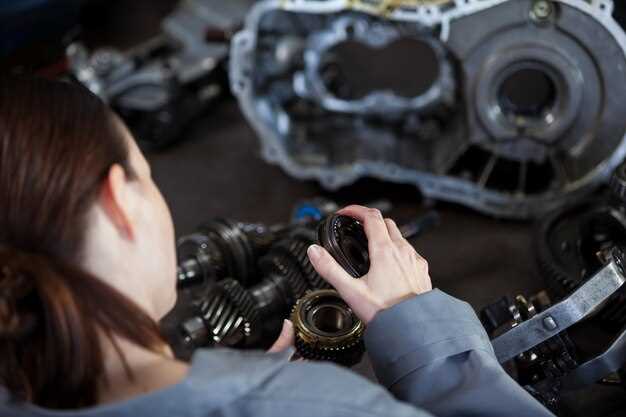
The alternator is a crucial component of your vehicle’s electrical system, responsible for converting mechanical energy into electrical energy. This process powers essential systems such as lights, radio, and charging the battery. Over time, wear and tear can affect the alternator’s efficiency, leading to potential issues that may compromise your vehicle’s performance. Regular maintenance is key to ensuring optimal functionality and prolonging the life of this vital component.
Ignoring alternator maintenance can result in a host of problems, ranging from dimming lights to a completely dead battery. Understanding the signs of alternator failure and establishing a routine check can save you from unexpected breakdowns and costly repairs. Regular inspections, proper belt tension, and clean electrical connections contribute significantly to the longevity and efficiency of your alternator.
In this article, we will explore effective strategies for maintaining your alternator, discuss common signs of malfunction, and provide tips for prevention. By following these guidelines, you can ensure that your vehicle operates smoothly and reliably, ultimately enhancing your driving experience.
Understanding the Role of the Alternator in Your Vehicle
The alternator is a crucial component of your vehicle’s electrical system, primarily responsible for generating electricity to power various electrical accessories and recharge the battery. It converts mechanical energy from the engine into electrical energy, ensuring that your vehicle’s battery remains charged while you drive.
Typically, the alternator operates using a belt connected to the engine’s crankshaft, which causes it to spin and produce electricity. This process is essential for maintaining the overall performance of the vehicle. Without a functioning alternator, the battery would deplete rapidly, leading to a loss of electrical power and potential engine shutdown.
Here are some key functions of the alternator:
| Function | Description |
|---|---|
| Power Supply | Provides electrical energy to run essential systems such as lights, radio, and dashboard instruments. |
| Battery Charging | Recharges the vehicle’s battery, ensuring it retains enough power to start the engine and operate when the vehicle is off. |
| Regulation of Voltage | Maintains a consistent voltage level throughout the electrical system, preventing damage to sensitive components. |
Understanding how the alternator functions can help vehicle owners recognize symptoms of failure, such as dimming headlights or a warning light on the dashboard. Regular maintenance checks can prevent issues and ensure optimal vehicle performance.
Identifying Symptoms of a Failing Alternator

Recognizing the signs of a failing alternator is crucial for maintaining your vehicle’s performance and preventing unexpected breakdowns. A malfunctioning alternator can lead to a host of electrical issues, making it essential to pay attention to specific symptoms.
Dimming or Flickering Lights: One of the most common indicators of alternator trouble is the dimming or flickering of headlights and dashboard lights. If the lights appear weaker than usual or fluctuate in brightness, it may signal that the alternator is not delivering sufficient power to the electrical systems.
Battery Warning Light: A warning light on your dashboard, often depicted as a battery icon, is a direct message from your vehicle’s monitoring system. If this light illuminates, it could signify that the alternator is failing to charge the battery effectively. Ignoring this warning can lead to complete battery discharge.
Strange Noises: Unusual sounds such as grinding, whining, or clicking coming from the engine area may indicate that the alternator’s bearings are worn or damaged. These noises should not be overlooked, as they are often precursors to more significant failures.
Electrical Failures: A failing alternator can result in erratic behavior of electrical components. If you notice that power windows, radio, or other accessories are unresponsive or operate inconsistently, it may point to inadequate power supply from the alternator.
Difficulty Starting the Engine: If your vehicle experiences difficulty starting or you hear a clicking sound when turning the key, the battery may not be receiving enough charge from the alternator. This issue can escalate rapidly if not addressed promptly.
Burning Smell: A burning smell, particularly if accompanied by smoke, should be taken seriously. It may indicate overheating or failing components within the alternator. This situation is dangerous and requires immediate attention.
Addressing these symptoms early can prevent further damage to your vehicle and ensure reliable performance. Regular maintenance checks, including testing the alternator, can help identify potential problems before they escalate.
Regular Maintenance Practices for Longevity
To ensure your alternator operates efficiently over the long term, it is essential to implement regular maintenance practices. These steps not only extend the lifespan of the alternator but also contribute to the overall performance of your vehicle.
1. Routine Inspections: Frequently check the alternator for any visible signs of wear or damage. Look for frayed wires, loose connections, and corrosion on terminals. Early detection of issues can prevent more significant problems down the line.
2. Cleanliness: Keep the area around the alternator clean and free from debris. Dirt and grime can hinder performance and lead to overheating. Use a damp cloth to remove dust and ensure that cooling vents are unblocked.
3. Electrical Connections: Periodically inspect and tighten all electrical connections to ensure they are secure. Loose or corroded connections can result in voltage drops, causing the alternator to work harder and potentially fail.
4. Battery Maintenance: A healthy battery plays a crucial role in the alternator’s function. Check battery terminals for corrosion and clean them as needed. Regularly test the battery’s voltage to ensure it holds a charge effectively.
5. Belt Inspection: Examine the serpentine or drive belt that connects the alternator to the engine. Look for cracking, wear, or misalignment. A worn-out belt can lead to insufficient power generation or cause the alternator to overheat.
6. Professional Servicing: Schedule periodic inspections with a qualified mechanic. They can assess the alternator’s performance, test its output, and replace any worn-out components before they cause failure.
7. Replacement of Worn Components: If you notice any signs of wear in the alternator or its associated components, replace them promptly. This proactive approach prevents unexpected breakdowns and ensures consistent vehicle performance.
By systematically following these maintenance practices, you can significantly enhance the longevity and reliability of your alternator, ensuring optimal vehicle performance throughout its life.
Cleaning and Inspecting Your Alternator Connections
Maintaining clean and secure connections to your alternator is crucial for optimal vehicle performance. Over time, dirt, grime, and corrosion can build up on the terminals and connectors, leading to poor electrical conductivity and potential alternator failure.
To begin, ensure your vehicle is turned off and the battery is disconnected. Use a wrench to carefully remove the negative cable followed by the positive cable from the battery. This prevents any accidental short-circuits during maintenance. Next, locate the alternator, typically found near the front of the engine, and inspect the connections.
Examine the battery cables and the connectors for any signs of corrosion, which can appear as a white, powdery substance. If corrosion is present, it can be cleaned using a mixture of baking soda and water. Apply the solution to the corroded areas and scrub with a soft-bristle brush. Rinse with clean water and dry thoroughly before reconnecting.
While cleaning, check for frayed wires, loose connectors, or damaged terminals. Tighten any loose connections with the appropriate tools and replace any damaged components to ensure a secure fit. Pay special attention to the wires that connect the alternator to the battery, as these are critical for efficient electrical flow.
Once the cleaning and inspection are complete, reconnect the positive cable to the battery followed by the negative cable. It’s advisable to start the vehicle and monitor the battery light on the dashboard. If the light stays off, your connections are functioning properly. Regular inspection and maintenance of your alternator connections can enhance your vehicle’s electrical system reliability and longevity.
When to Replace Your Alternator: Key Indicators
The alternator is a crucial component of your vehicle’s electrical system, responsible for converting mechanical energy into electrical energy to power the battery and electrical systems. Recognizing when to replace your alternator can save you from inconvenient breakdowns and expensive repairs. Here are the key indicators to watch for:
- Dim or Flickering Lights: If your dashboard lights or headlights appear dim or flicker while driving, it may signal that the alternator is not supplying adequate power.
- Electrical Issues: Various electrical problems, such as malfunctioning power windows, locks, or radio, can be a sign of a failing alternator. These components rely on a consistent power supply.
- Warning Light: Many modern vehicles have a battery warning light that illuminates on the dashboard when the alternator is underperforming or there is a charging issue.
- Strange Noises: If you hear grinding, whining, or unusual sounds coming from the engine bay, it may indicate a problem with the alternator bearings or internal components.
- Battery Issues: Frequent battery failures or the need to jump-start your vehicle can indicate that the alternator is not properly charging the battery.
- Overheating: An overheated alternator can lead to performance degradation. This may be due to excessive mechanical strain or internal failure.
- Corroded Connections: Inspect the alternator and battery connections. Corrosion can impede the electrical flow and signal the need for replacement.
If you notice any of these symptoms, it is essential to have your alternator tested by a qualified technician promptly. Early intervention can prevent more significant issues and ensure your vehicle remains reliable.
Choosing the Right Alternator for Your Vehicle Model
Selecting the appropriate alternator for your vehicle is crucial for ensuring optimal electrical performance and longevity. Start by identifying the specific make, model, and year of your vehicle. Vehicle specifications often dictate the exact requirements for alternators, such as output voltage and amperage. This information can typically be found in your owner’s manual or through the manufacturer’s website.
Another vital consideration is the alternator’s power output. Vehicles with more electrical accessories, such as stereo systems, lighting upgrades, and navigation systems, require alternators that produce higher amperage. On the other hand, basic models with fewer electrical components can function efficiently with lower output options. It’s essential to calculate your total amperage requirement based on all installed accessories to choose an alternator that meets or exceeds this demand.
Next, evaluate the type of alternator suitable for your vehicle’s engine. Some engines require a specific alternator design due to space constraints or mounting configurations. For example, compact engines may need a more compact alternator model, while heavy-duty vehicles may necessitate industrial-grade units designed for higher performance and durability.
Quality and Reliability are also key factors in your selection. Opt for alternators from reputable manufacturers that provide warranties and guarantee reliable performance. Remanufactured units can be a cost-effective option but ensure they meet OEM specifications and are tested for quality.
Don’t overlook the importance of compatibility with your vehicle’s electrical system. Some modern vehicles utilize advanced computer systems that may have specific programming requirements for the alternator. Confirm that the alternator you choose includes any necessary sensors or connectors for seamless integration.
Finally, consult with a professional mechanic or an experienced parts supplier if uncertain. They can provide valuable insights on alternator choices specific to your vehicle model, helping you avoid potential mistakes that might affect overall performance.














